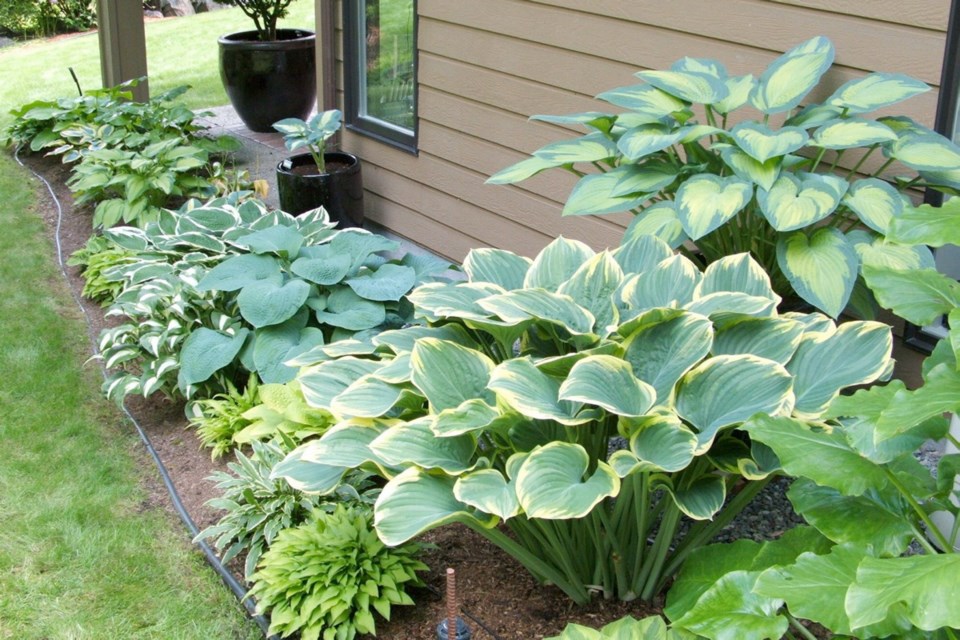Dear Helen: Peonies in the garden of my new home are dying back. When should the fading top growth be removed?
In the summer, I noticed a few young shoots on one of the plants had wilted. Not knowing what to do, I removed the entire stem bearing the wilted tip. What would have caused the problem and what is the proper way to address it?
W.L.
You did precisely the right thing. As soon as wilted growth is observed in a peony, remove it, along with the entire stem carrying the damaged end.
The issue is botrytis blight, the most common and troublesome disease of peonies. It shows up as wilting of young stems, flower buds turning black and drying, and/or brown areas on leaves.
Left on the plant, affected areas develop grey spores that spread the disease. Do not compost the removed parts.
In the fall, when peony stems have almost finished dying down, cut them off at or slightly beneath ground level. Take care not to damage plump, pink growth buds that lie close to the soil surface. As a precaution, do not compost the removed top growth.
Clean the root area thoroughly, dust with bone meal and cover with a shallow layer of leaf mould, topsoil or compost.
Dear Helen: Is October the right time to move hostas?
D.W.
Autumn and spring are the preferred times for moving or for dividing and replanting hostas. Personally, I feel most comfortable with using the earliest parts of both seasons for dividing or moving perennials.
Early in the fall gives the best chance for rooting before freezing weather. Early spring allows plants and divisions a chance to establish roots before hot weather, which stresses newly made plantings.
At this time in October, it’s hard to know how soon wintery weather will strike. If there is some reason for urgency, move the plants now.
If you are feeling uncertain, there’s no harm in waiting until March or early April.
Dear Helen: I have just begun growing dahlias. My question: My plants grew 120 to 150 centimetres tall, while a serious dahlia grower I met has potted plants only 60 cm tall. How can I keep mine to a more manageable height?
L.D.
First, plants confined in pots will grow significantly smaller than they would in the open garden.
And dahlias come in a wide range of flower styles and sizes as well as plant heights, which range from low-growing bedding and container dahlias at 30 to 45 cm to tall specimens around 150 to 180 cm high.
A third point to consider is that plant height can be manipulated somewhat. For a shorter, bushier, more flower-filled plant, pinch out the centre growing tip when a plant has grown about 50 cm high.
For the opposite effect of fewer, larger “display” blooms, remove side flower buds on growing stems and leave the centre bud to grow.
This treatment, called disbudding, will result in a taller plant and larger flowers.
Garden Events
View Royal meeting. The View Royal Garden Club will meet this evening at 7:30 in Wheeley Hall, 500 Admirals Rd. Cim MacDonald, photographer, author, artist and teacher, will present “Developing an artist’s eye when taking garden photographs.” The evening will also include a judged mini show of exhibits from members’ gardens and a sale of plants and garden items. Drop-in fee $5.
Chrysanthemum meeting. The Victoria Chrysanthemum Society will meet on Saturday, Oct. 27, 2 p.m. at 1647 Chandler Ave. The society is the best source locally of hands-on information on growing the many different forms of “show” or florists’ chrysanthemum.
HCP workshops. The Horticulture Centre of the Pacific, 505 Quayle Rd. in Saanich, is offering the following workshops. To register call 250-479-6162. hcp.ca.
• Hypertufa: Saturday, Nov. 3, 10 a.m. to 1 p.m. Create a 30 x 35 cm hypertufa trough in the classic rock-garden style. Materials included in cost of $65 for HCP members, others $70.
• Wild Food & Nutrition: Sunday, Nov. 4, 1 to 4 p.m. Explore the vitamin- and mineral-rich world of local plants and learn how wild plants increase the diversity of gut bacteria. The afternoon will include a short walk around the HCP gardens. Members $35, others $40.
Harvest festival. The HCP is hosting a harvest festival, a family event, on Saturday, Oct. 27, 10 a.m. to 2 p.m. Pre-register at 250-479-6162.



